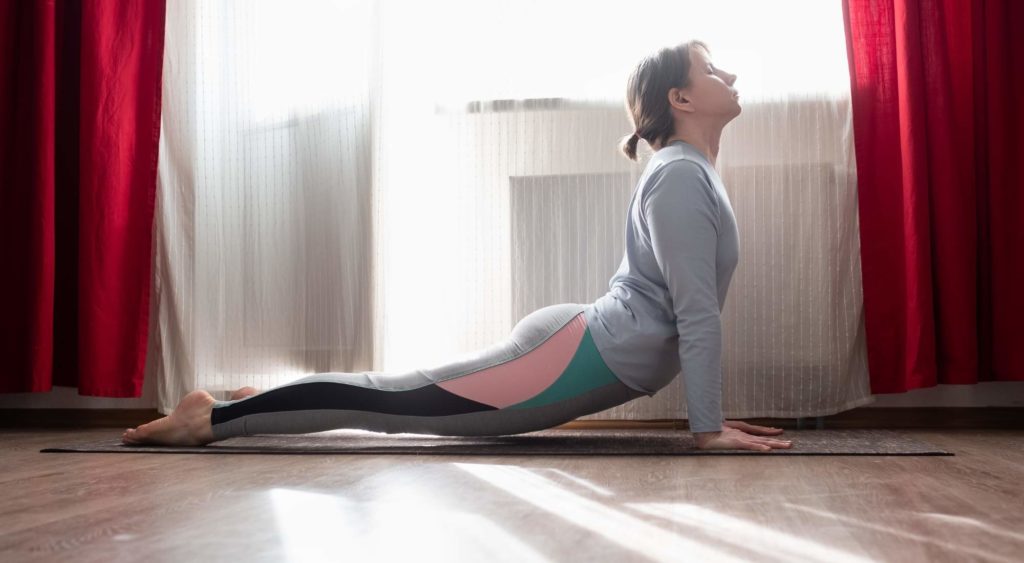Sciatica Physical Therapy

Physical Therapy for Sciatica – Information, Exercises, and More
Is sharp pain shooting down your leg throughout the day? Curious what could be causing it?
You’re not alone.
Nearly 40% of people will experience sciatica at some point in their lifetime.
The good news is that there are ways to find relief from sciatic pain.
In this post, we’ll be discussing information about sciatica — from causes and symptoms to exercises that will help alleviate the pain and discomfort. Keep scrolling to learn more.
What is Sciatica?
Some doctors say sciatica is typically a symptom, not really a diagnosis. The sciatic nerve is the longest nerve in the body — it starts in the lower back, splits, runs through your hips, butt, legs, and feet.
Sciatica refers to the pain that radiates down the path of the sciatic nerve. Because of the length of the sciatic nerve, the pain can radiate down your lower back and one or both legs.
What Causes Sciatica?
90% of sciatica cases are caused by a herniated (or slipped) disc with nerve root compression, but other issues can cause sciatica, including:
- Spinal stenosis — narrowing of the spine that compresses part of the sciatic nerve
- Bone Spurs — commonly a result of osteoarthritis
- Cauda equina syndrome — a rare disorder that affects the nerve roots in the lumbar of the spinal cord
- Spondylolisthesis — disks of the spine slip forward over the vertebra below it
- Tumors in the spine – tumors may actually compress the root of the sciatic nerve
- Infection
- Degenerative disk disease
- Broken bones — like the pelvis or thighbone
- Pregnancy — pregnancy can cause loosening of certain ligaments, which can cause the spine to become “unstable” causing discs to slip. The baby’s weight or position adding pressure to the sciatic nerve may also cause sciatica during pregnancy.
Sciatica is more common in people who:
- Are overweight
- Suffer from acute back pain
- Live a sedentary lifestyle
- Are 40+ years old
Sciatica Symptoms
Symptoms of sciatica usually occur in the lower back, hip, leg, and feet. The most common symptoms of sciatica are:
- Numbness
- Pain
- Tingling
- Burning
In serious cases, typically associated with Cauda equina syndrome, loss of bowel control may be a symptom.
Sciatica pain can be constant or it may be a sharp or shooting pain that comes and goes. A good deal of sciatica sufferers describe the sensation as an electric shock through the area.
The pain can range from mild to severe — some people experience excruciating pain while moving when sciatica symptoms occur.
Sciatica Physical Therapy Treatment
In most cases, a mix of bed rest and taking nonsteroidal anti-inflammatory drugs (NSAIDs) — like ibuprofen or naproxen for up to three days may help relieve pain and decrease inflammation.
Extended periods of bed rest are unnecessary and many health professionals recommend physical therapy treatment for sciatica. In fact, it may be one of the best treatments for mild sciatica.
Sciatica physical therapy treatment involves improving:
- Posture
- Hip mobility
- Strength
- Spine flexibility
Continue reading to learn how physical therapy helps alleviate sciatica symptoms.
Severe Sciatica Treatment
If symptoms of sciatica last longer than a few weeks, it is important that you contact your doctor. Your doctor may recommend treatments such as:
- Stretching
- Cold and hot therapies
- Weight loss
- Muscle relaxers
- Corticosteroid injections
5-10% of people who experience sciatica pain may need surgery. A surgeon may perform any of the following procedures to relieve your sciatica:
- Diskectomy — the goal of this surgery is to remove whatever is putting pressure on your sciatic nerve, typically a bone spur or herniated disc.
- Laminectomy — with this procedure, a surgeon removes the lamina and tissue pressing on the nerve that’s causing pain.
- Microdiscectomy — during this procedure, they take a portion of the disc material under your nerve root or the bone over the nerve root out.
Sciatica Physical Therapy – Will PT Help?
Physical therapy is highly recommended for patients suffering from sciatica. But does it help?
Yes, it does.
Sciatica physical therapy exercises are beneficial for several reasons, including:
- Reduction of inflammation
- Strengthening of the spinal column
- Strengthening of core muscles
- Alleviation of pain associated with sciatica
Best Sciatica Exercises
Because sciatica has several different causes, the best exercises may vary.
Below, you will find some of the most common sciatica physical therapy exercises and stretches that a physical therapist may recommend.
Sciatica Physical Therapy Exercises
Foam roller exercises — using a foam roller is a great way to increase flexibility and relieve pain in the back, hips, and legs. Foam roller stretches can also reduce nerve compression.
Spinal decompression exercises — traction exercises specifically, relieve pressure on the spine. One study found that this improved symptoms associated with back pain.
Sciatica Physical Therapy Stretches
Nerve flossing — also known as nerve gliding is a gentle stretch that when mixed with physical therapy, improves range of motion and decreases pain caused by sciatica.
Yoga — studies found that stretches, like the ones done in yoga, are beneficial for chronic lower back pain.
Depending on the cause of your sciatica there are a number of different stretches that can help.
How In Motion O.C Can Help With Sciatica
Sciatica pain is something no one should have to live with.
We’ve helped dozens of people overcome their sciatica pain. We’re rated the number one physical therapist on Yelp and Google with good reason. Our patient testimonials and case studies are proof that we’ve got your back — literally.
The therapists at In Motion O.C. are committed to our mission to bring hope, healing, confidence, and joy to others. Schedule your consultation today to see how we can help.
*This information about physical therapy for Sciatica was reviewed by Dr Natalie Thomas, PT, DPT. If you have any questions, please don’t hesitate to contact us here.



